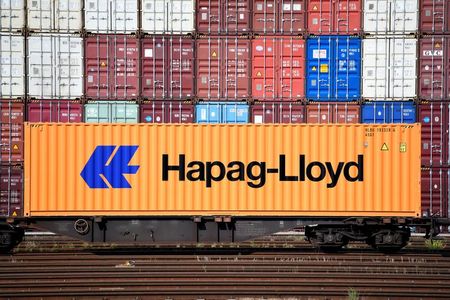Hapag-Lloyd warns Panama Canal drought restrictions could hurt shipping giant

Shipping group Hapag-Lloyd has warned that using smaller ships on the Panama Canal could make the group “no longer competitive,” as severe droughts continue to disrupt the world’s largest trading route.
One of the driest years ever recorded has led the government to impose extended restrictions on shipping groups using the route, with water levels dropping to the lowest levels in years.
The canal has capped the daily number of ships that can pass through, while also adding a depth limit of 44 feet on larger ships and limiting the number of crossings allowed.
A spokesperson for Hapag-Lloyd told City A.M. that the company has had to “restrict intake” of cargo by “about ten per cent”.
Approximately 13,000 to 14,000 ships and about six per cent of global trade pass through the channel each year.
The Hamburg-headquartered firm warned that even if the rains were to “start soon, it will take a long time before the ships can operate at full capacity again. We don’t expect it before [the end of] August.”
It added that in the “extreme case” that the canal were to close, it would be a “huge problem for global shipping.”
Although a highly unlikely outcome, restrictions have been increasing throughout the year and Hapag-Lloyd warned that the company would be forced to use longer alternative routes from Asia to the east coast of the US, using the Suez canal.
It said this trip could add seven to 10 days to the journey, further hitting the firm’s bottom line.
It comes as the shipping sector also faces a squeeze from dipping freight rates – the price paid to carriers for the delivery of goods – and declining demand.
Hapag-Lloyd itself saw its earnings for the six months to January sink more than half year-on-year last week, with CEO Rolf Habben Jansen warning of a “challenging market environment.”
Rival AP Møller-Maersk warned in May of a “radically changed” world as profits plunged and the carrier faced an oversupply of ships ordered on the back of the previous year’s profit.